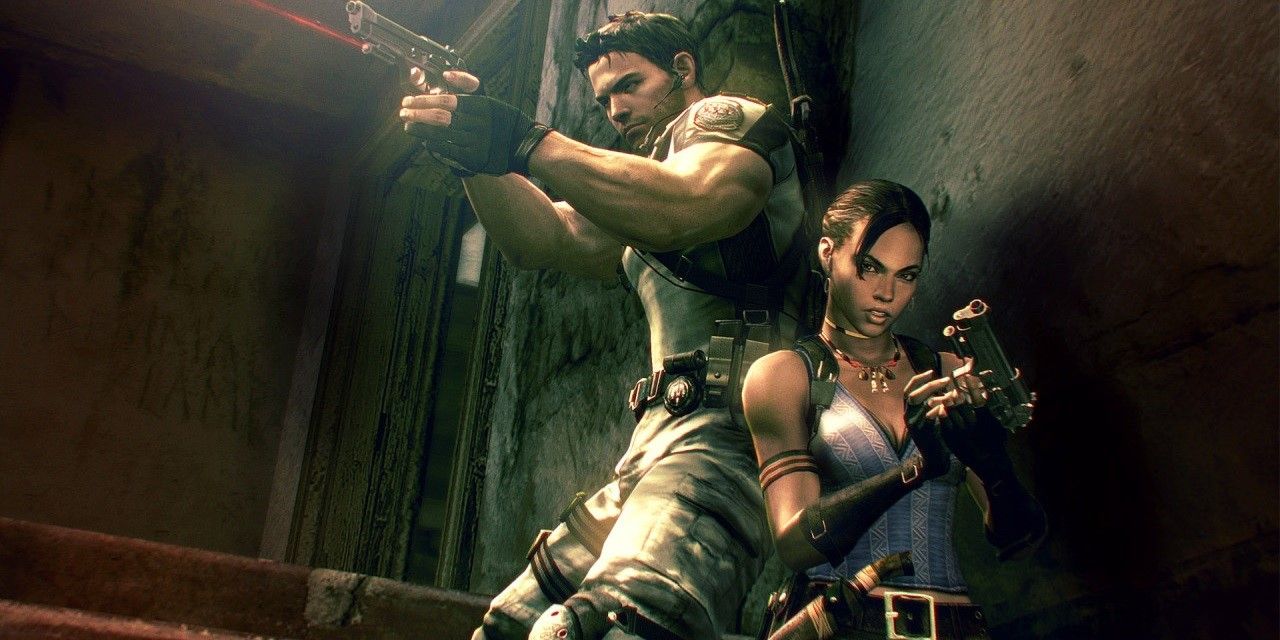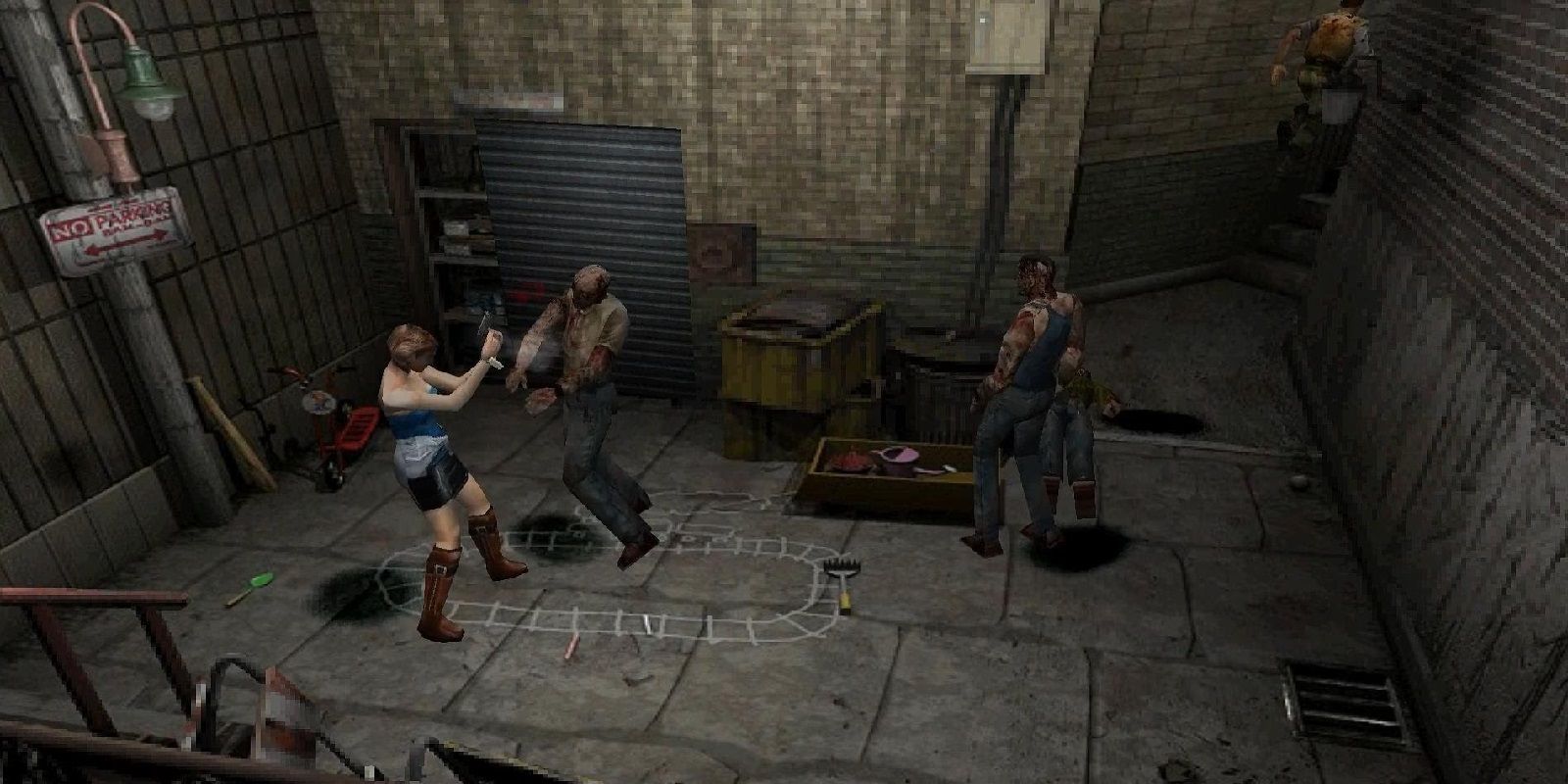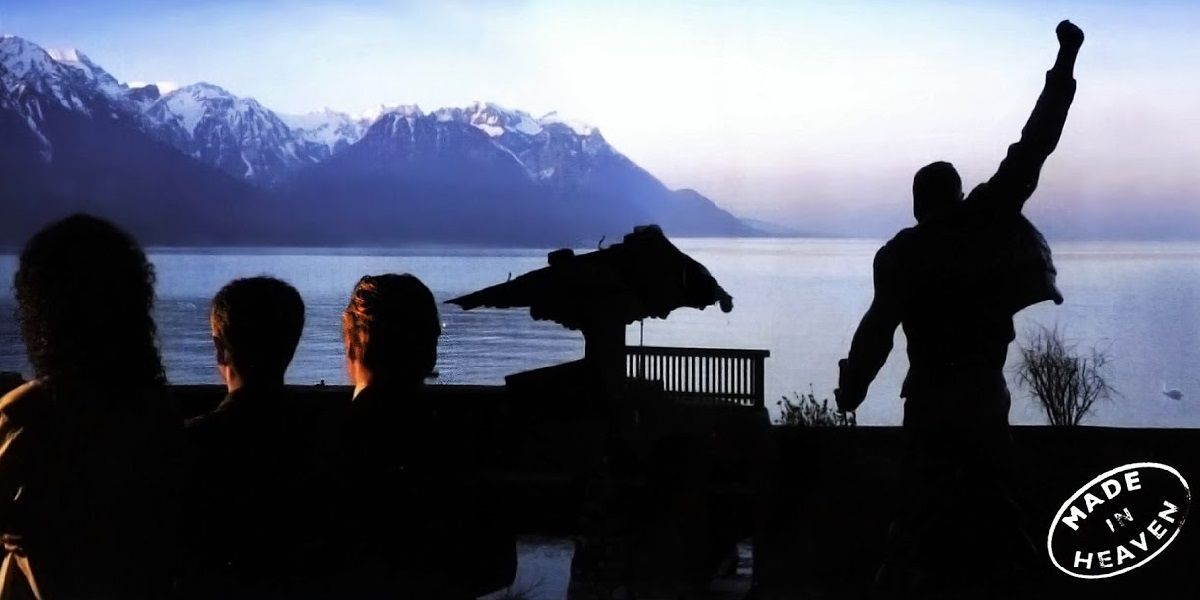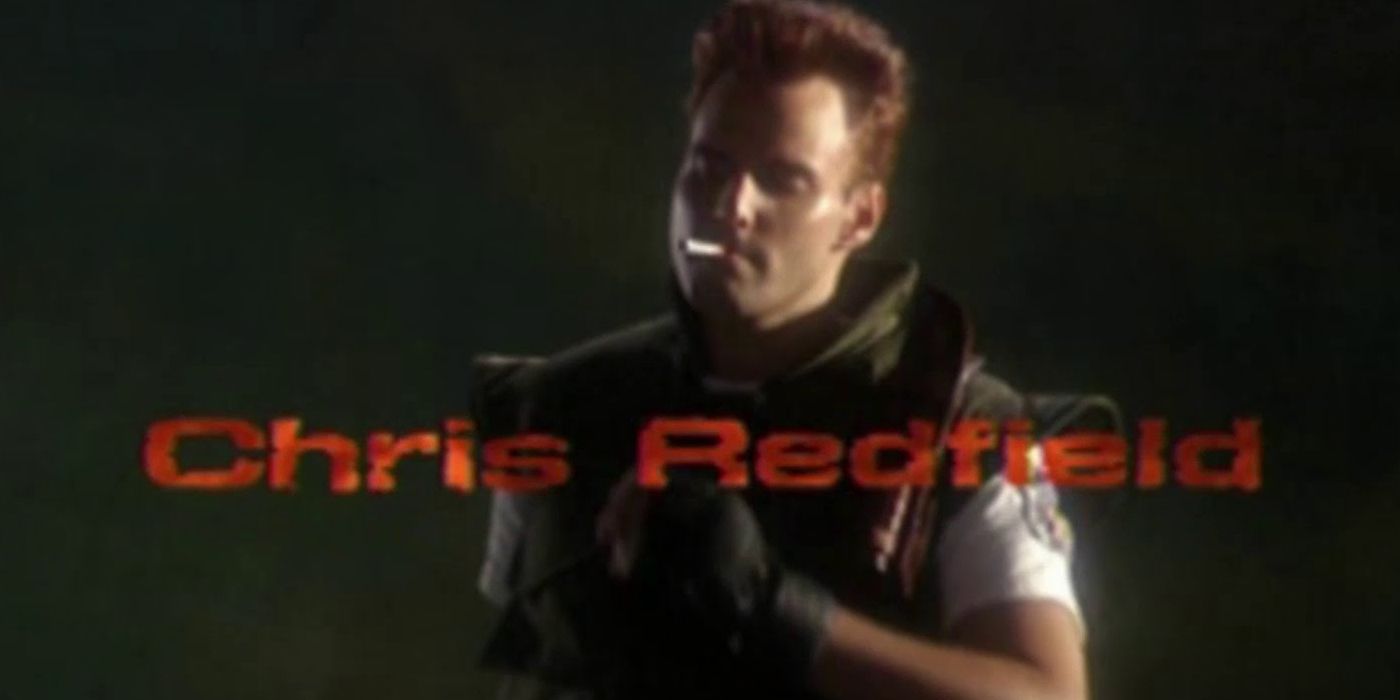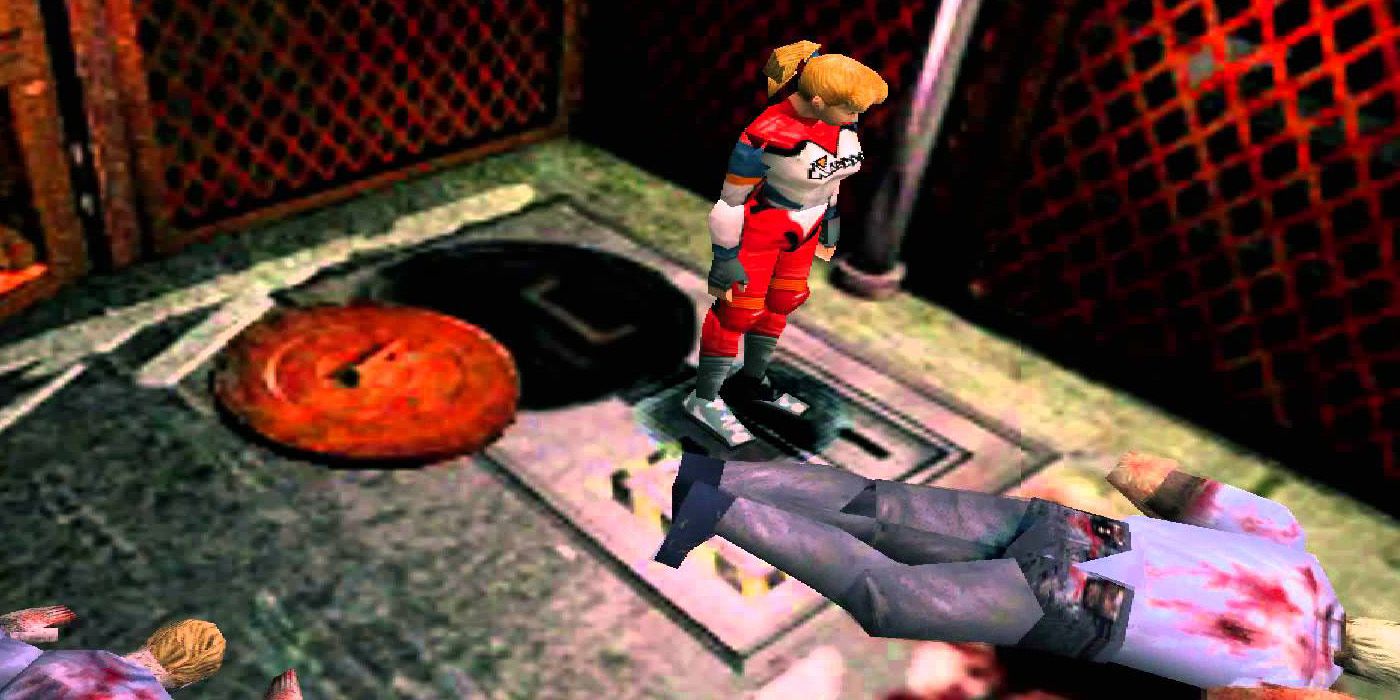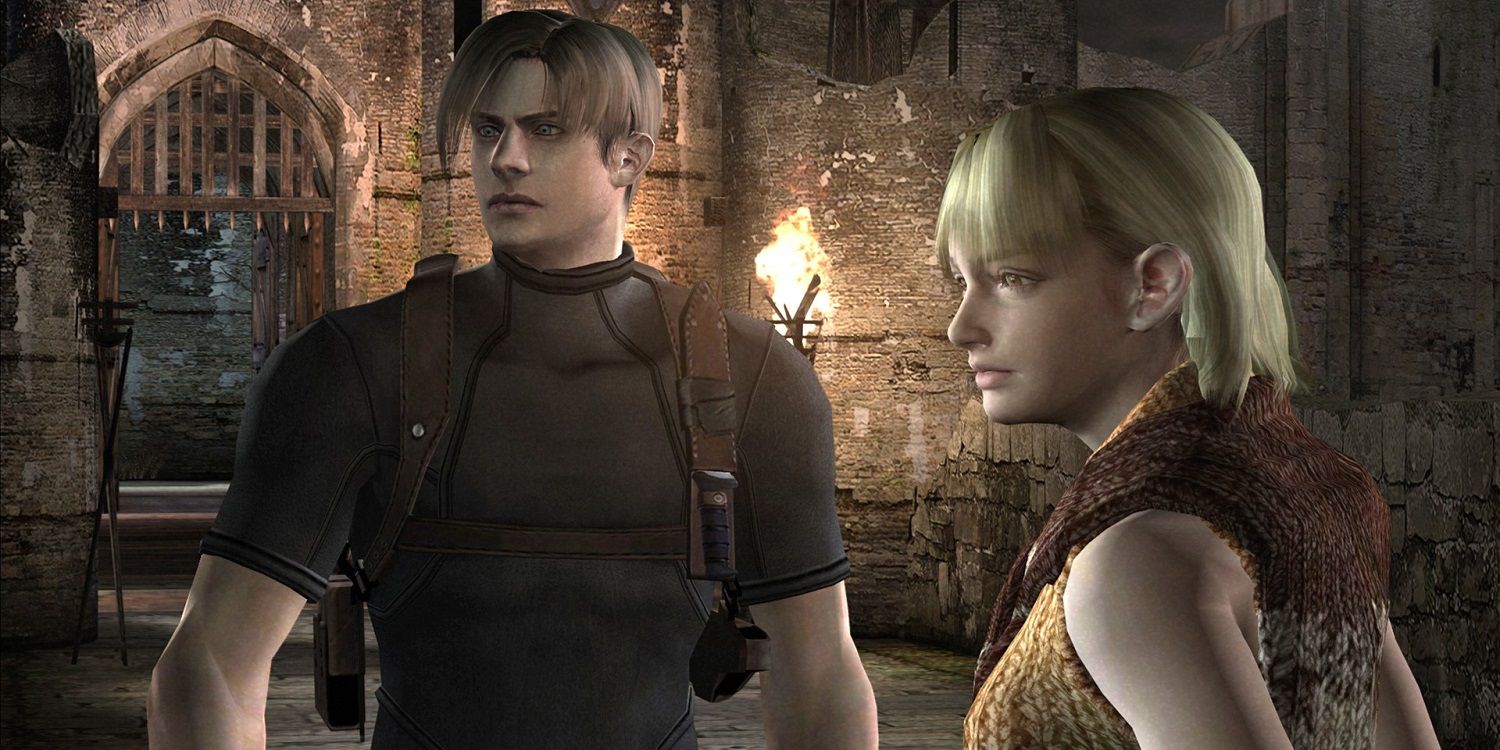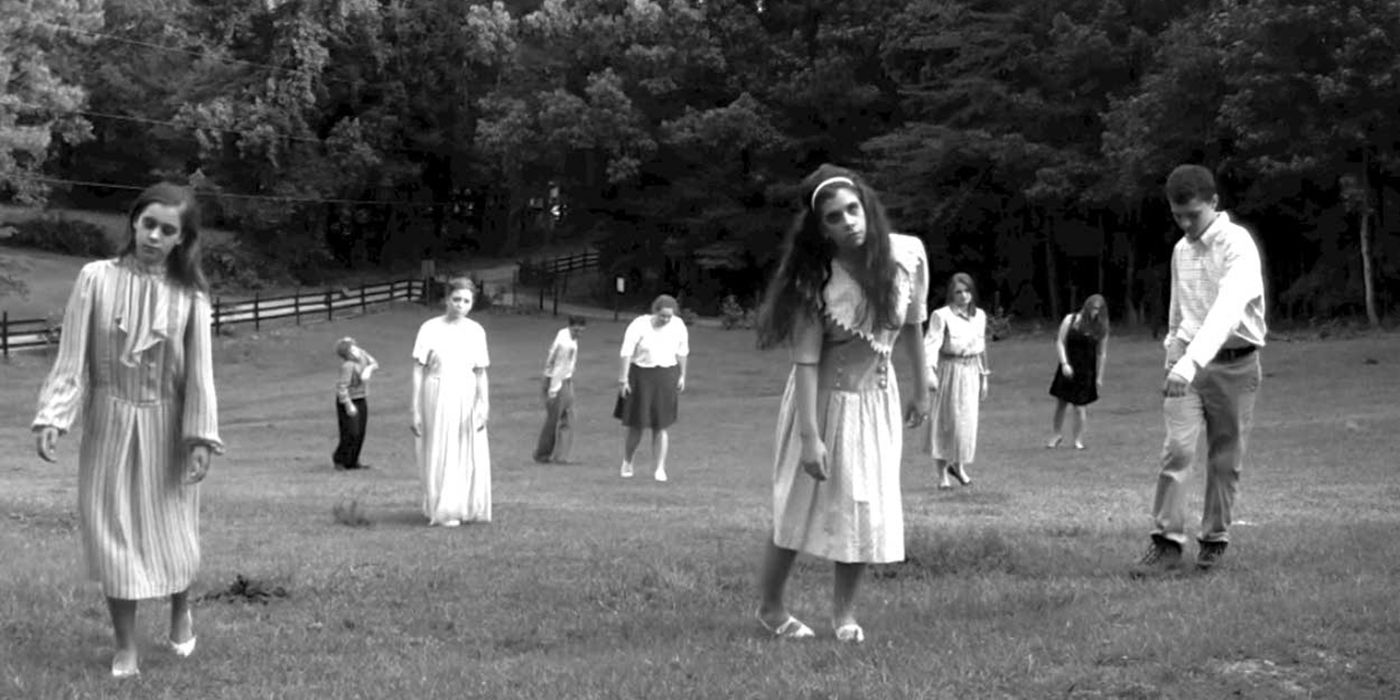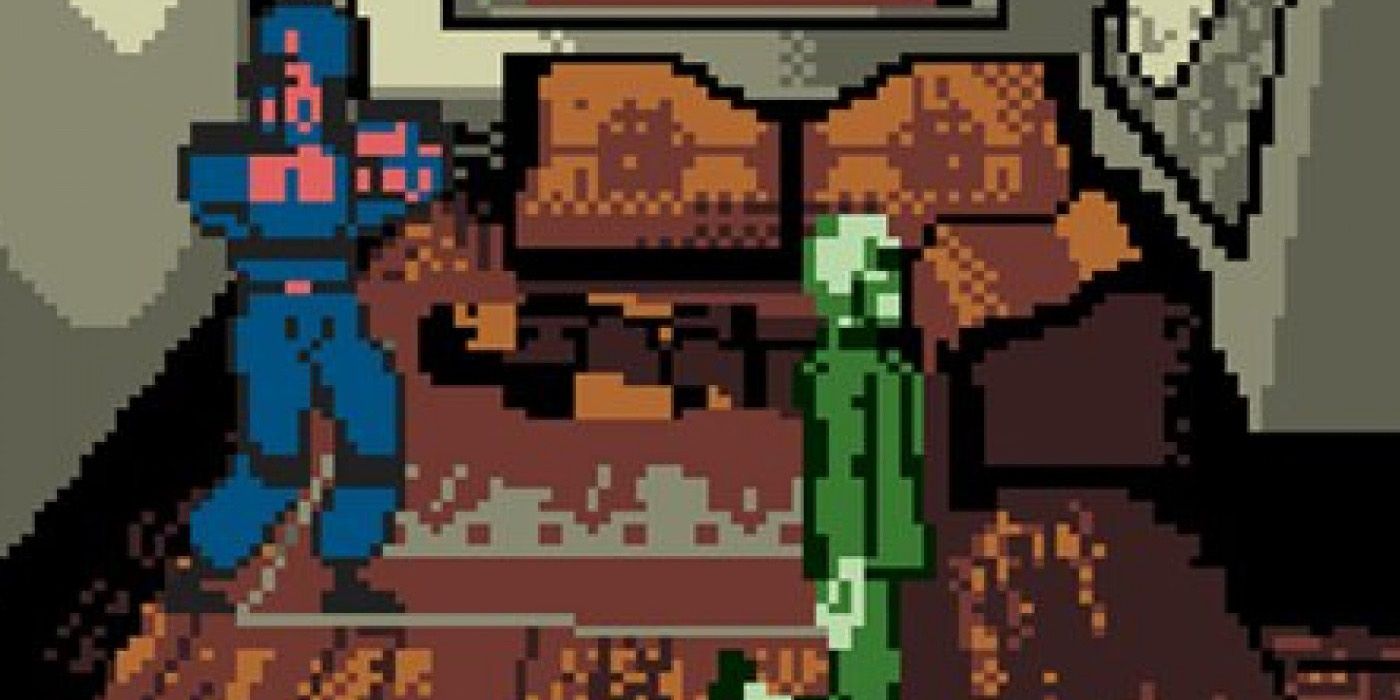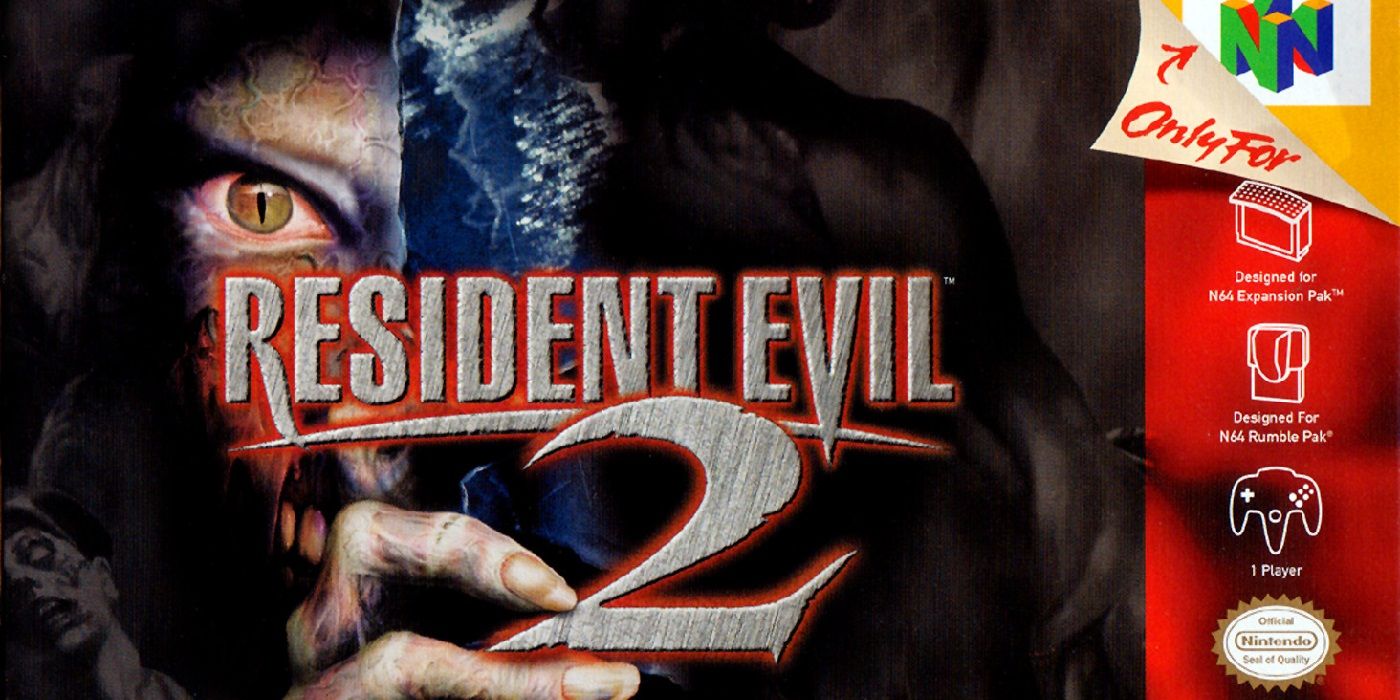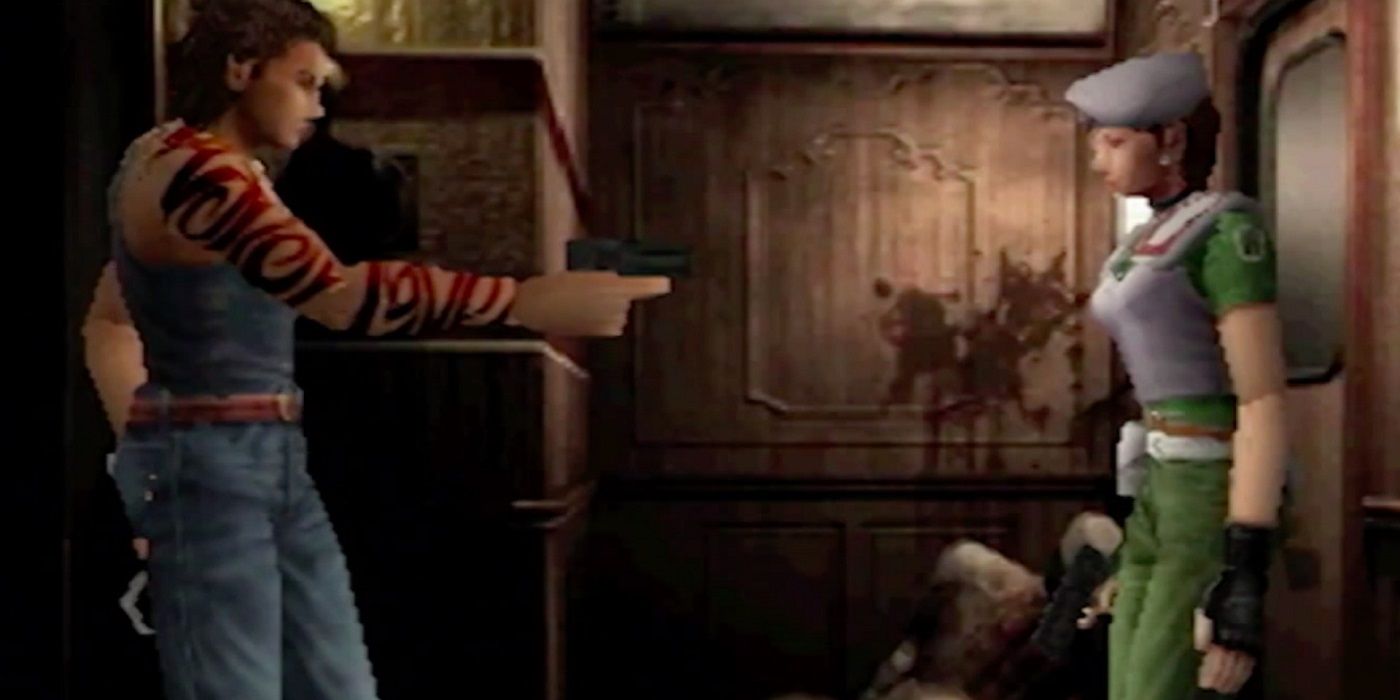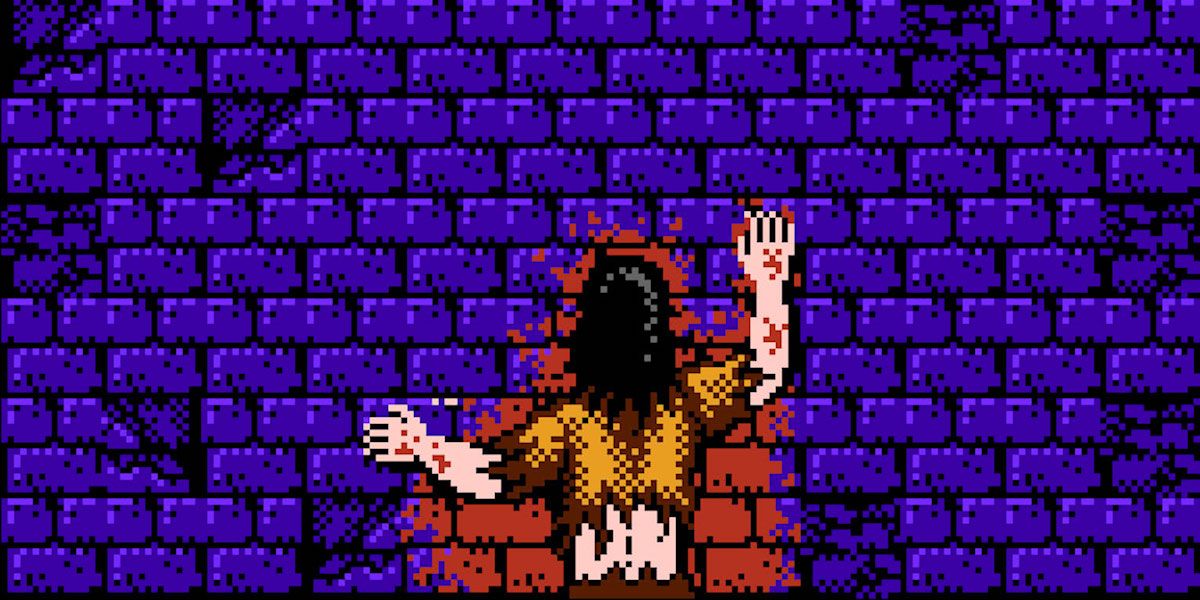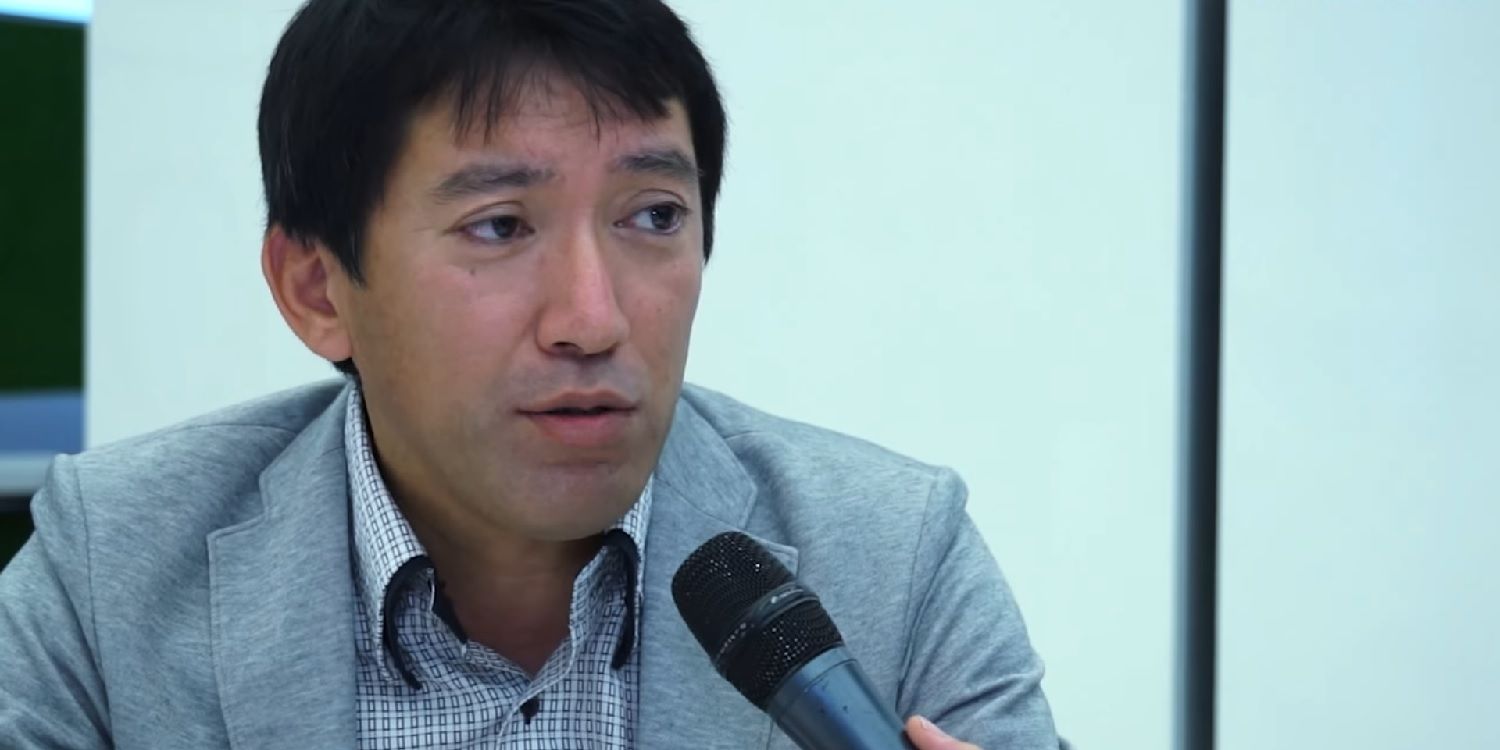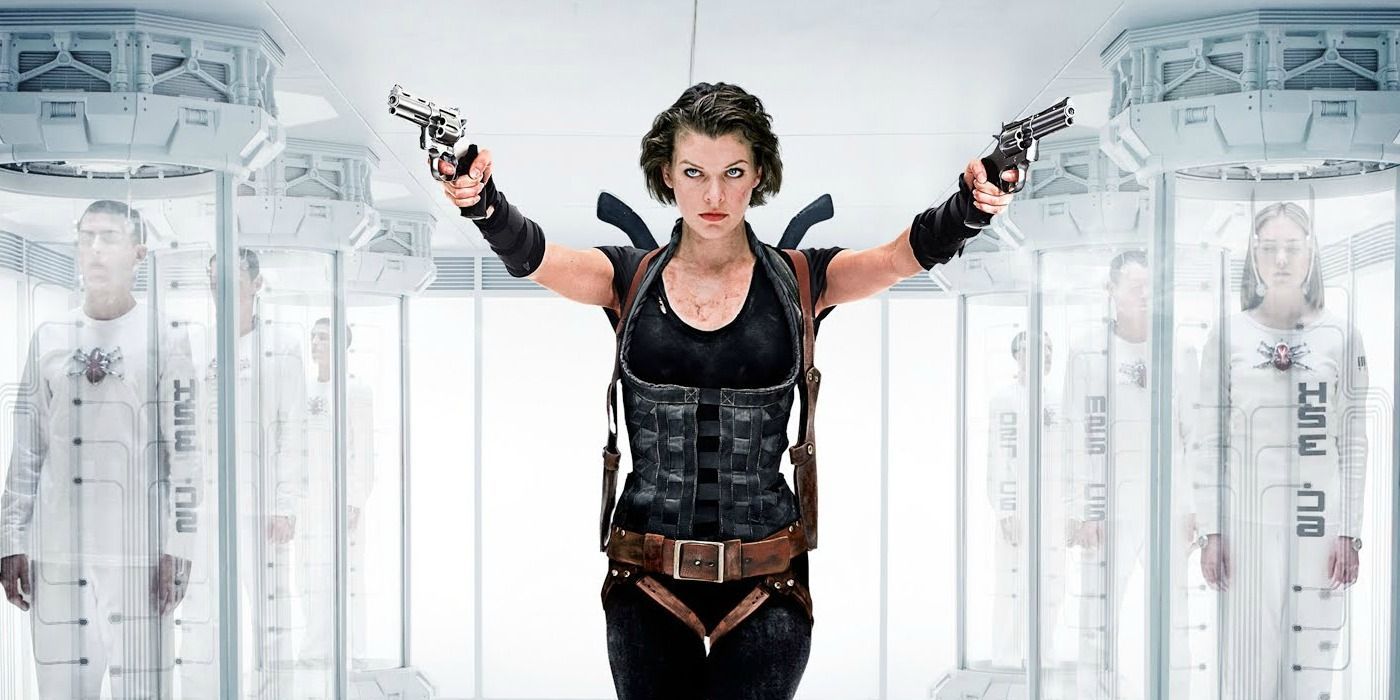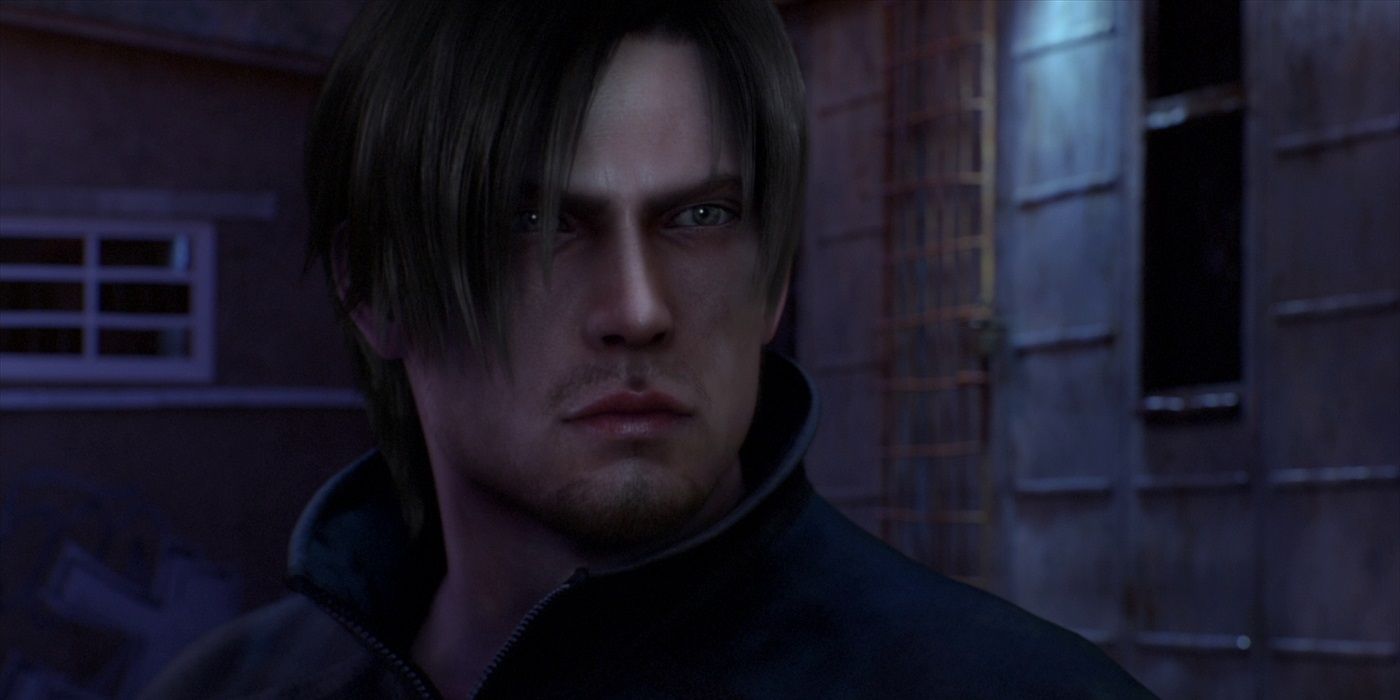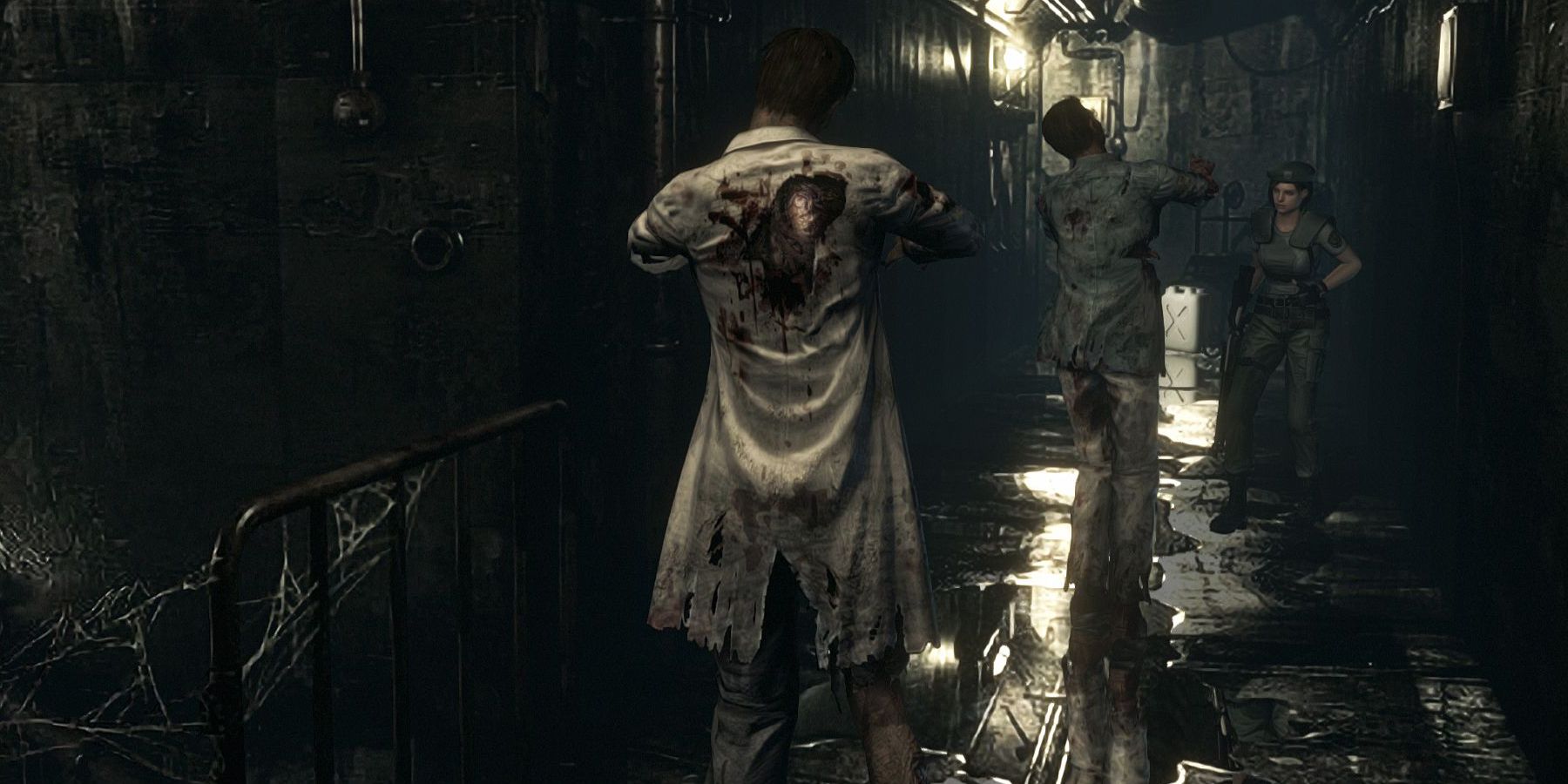January 2017 is dedicated to Resident Evil. January 24th sees the release of the highly-anticipated Resident Evil VII: Biohazard, which looks to bring the series back to its horror roots with an intimate tale of terror. Meanwhile, January 27th will see the launch of Resident Evil: The Final Chapter, which will close the books on the long-running film series based on the games. Later on this summer, a new animated movie, Resident Evil: Vendetta, will serve to expand the universe of the video game continuity. Resident Evil may be over 20 years old, but it shows no signs of slowing down, and the future of the saga looks terrific and terrifying!
With such a long and complex history, there are, of course, tons of fantastic stories related to the development of Resident Evil. This is a series filled with canceled games, rebooted ideas, and endless Easter Eggs abound. Here are 15 Things You Never Knew About Resident Evil.
15. English Only
One of the most memorable elements of the original 1996 Resident Evil game is its endearingly cheesy voice acting. Westerners might assume that the Japanese voice track is superior and that the English voice acting was just a cheap export. Actually, there is no Japanese voice track. Back when the game was being developed, Japanese voice acting was recorded, but ultimately scrapped due to its poor quality. Little did they know that the English translation, while totally adorable in its own way, was full of poor line-readings and clumsy writing.
Regardless, the game became a huge success, and the development team liked the idea of keeping the dialogue entirely in English. Subsequent games didn't bother to attempt a Japanese voice track, and Resident Evil remained an English-only franchise until the release of Resident Evil: Revelations in 2012. Subsequent titles would include Japanese voice acting, with English remaining an option for old-school purists.
14. Resident Evil VII is Actually Resident Evil VIII... At Least!
The new game, releasing on January 24th, is entitled Resident Evil VII: Biohazard. However, it's not really the seventh game in the series. In addition to the main, numbered entries, there is also the prequel, 2002's Resident Evil 0 (more on that in a bit), as well as Code: Veronica. The story goes that Code: Veronica (then a Dreamcast exclusive) and Resident Evil 3: Nemesis (then a PlayStation exclusive) were in development simultaneously, with Code: Veronica intended to be the third main entry in the series; however, it was eventually decided to keep numbered entries on PlayStation. As a result, the more integral Code: Veronica is often mistaken for a spinoff, when it's really the other way around.
Then there's Resident Evil: Revelations and its sequel, Revelations 2, which are technically spin-offs, but are arguably more integral to the overarching storyline than entries like Resident Evil 4 and Resident Evil 6. With these games in mind, the continued numbering of certain Resident Evil titles over others is only going to get more confusing as the years go by. Will we get a Revelations 3? Resident Evil 8? Maybe Capcom would be so bold as to make Code: Veronica 2: The Return of Steve Burnside?
13. Queen Lyrics
Someone working on Resident Evil games is a huge fan of Queen, the bombastic British rock band. Throughout the games, three big Easter Eggs relating to the band have appeared. The first is the phrase "Made in Heaven," which is the name of Queen's 1995 album. In the first Resident Evil, it appears on the back of Chris's alternate outfit. In the sequel, it is written on the back of a jacket belonging to Claire, Chris's sister.
In Resident Evil: Code: Veronica, Claire returns, with a new jacket and a new Queen reference. This new jacket says "Let Me Live," which is the title of one of the songs off the Made in Heaven album. Up to this point, all of the Queen references solely relate to the Redfield family, but Resident Evil 0 switched things up with the character of Billy Coen, an escaped convict who teams up with Rebecca Chambers. He has a large tattoo on his arm, and if one looks closely, the tattoo spells out the phrase "Mother Love," which is the name of another one of the songs on the Made in Heaven album. If Claire pops up in Resident Evil VII, perhaps her jacket will read "Heaven for Everyone."
12. International Censorship
The original Resident Evil opened and closed with live-action cutscenes. They were as poorly-acted as the rest of the game, but the intro certainly set the tone for RE, establishing an endearingly schlocky B-movie vibe and featuring lots of blood and gore. Or at least it would have, had it not been censored in all regions. The whole sequence was changed from color to black and white, and a handful of shots were cut. Ghastly images of mutilated bodies were replaced by newspaper clippings, and a subsequent scene featuring a decapitated head was removed completely. Additionally, all sequences which featured live-action Chris smoking cigarettes were replaced with alternative footage.
In Resident Evil 4, Leon could be killed by a chainsaw-wielding nutcase with a burlap sack on his head. In the American version, he cuts right through Leon's neck and his head falls to the floor. In the Japanese release, however, the scene is censored so that Leon's head remains on his shoulders. Either way, he is still very much dead.
11. Resident Evil 1.5
The first Resident Evil became an unprecedented hit, combining action, horror, puzzle-solving, and a conspiracy-laden story. Naturally, work began immediately on a sequel, which was intended to end the series on a definitive note. Despite being nearly completed, producer Shinji Mikami made the risky decision to cancel and restart development on the game, which simply was not meeting his expectations. In subsequent years, the details of Resident Evil 1.5, as it has come to be known, have become the stuff of legend. Leon Kennedy was present, but there was no Claire Redfield; instead, the female playable character was a college student named Elza Walker. When development was rebooted, Elza became Claire, linking the events of the sequel to the characters of the original.
Among many other changes to the story, characters, and scenario, Resident Evil 1.5 would have featured less detailed graphics, in favor of having more zombies on screen at one time. In hindsight, it's fun to wistfully daydream of what could have been, but it's hard to imagine that this earlier build of the game could have truly been better than the final version of Resident Evil 2, which is universally beloved as one of the greatest games ever made.
10. The Many Reboots of Resident Evil 4
Like Resident Evil 2 before it, Resident Evil 4 started life as a very different game. RE2, RE3, and Code: Veronica all hint at a final battle against the forces of Umbrella, and Resident Evil 0 hints at the Progenitor Virus and elements which were supposed to foreshadow RE4. However, the final product discards almost all of this, and Umbrella is taken down in the prologue...by bankruptcy. In fact, Resident Evil 4 is so far removed from its predecessors, it's nearly unrecognizable as a Resident Evil title, save for the presence of returning characters like Leon Kennedy and Ada Wong.
Resident Evil 4 restarted development multiple times. One version of the game had Leon leading an assault on an Umbrella castle and being infected with a virus which would slowly drive him to madness as the game went on. Another iteration, known by fans as the "Hooked Man Version," introduced the over-the-shoulder camera which remained in the final game, but was derided for including too many supernatural elements, which clashed with Resident Evil's more science-based aesthetic. At one point before the final scenario was finally settled upon, RE4 would have gone back to featuring traditional zombies, but no footage of this version exists.
Like Resident Evil 2, it's only natural to wonder how great these versions of RE4 would have been, had they been developed to completion. But still, could they possibly have been better than Resident Evil 4, one of the most ground-breaking and innovative action games of all time? With regards to the creation of this game, it seems that Capcom made the right choice. With regards to the cancellation of Mega Man Legends 3, however, they're still far short of earning the community's forgiveness.
9. George Romero Almost Directed The Resident Evil Movie
It's no secret that the Resident Evil series is hugely influenced by the work of George A. Romero, the father of modern zombie cinema. Night of the Living Dead, Dawn of the Dead, and Day of the Dead basically created the rules of zombies which are followed to this day in projects like The Walking Dead, and, indeed, Resident Evil. In fact, when a Resident Evil movie was first announced, Romero was the first person tapped to write and direct the film.
His script was released online, and it's a pretty faithful adaptation of the first game; the elite STARS team is called to investigate a mysterious mansion connected to a spate of murders, and they stumble upon a bio-weapons conspiracy. Most of the enemies and bosses from the game appear in the script, including the giant snake, Yawn, as well as the admittedly ridiculous Plant 42.
Eventually, Capcom decided that Romero's script was too close to the original game, and they wanted something different for the film. They turned to Paul WS Anderson, whose script was only tangentially related to the games and featured entirely original characters and settings. The rest, as they say, is history.
8. Resident Evil On Game Boy Color
The original Resident Evil's strength was in its tension and level design, and not in cutting-edge graphics. The character models were blocky and the pre-rendered backgrounds were nothing particularly special. Still, it would be futile to port a full-sized PlayStation title to an underpowered handheld like the Game Boy Color. Regardless, HotGen, a studio who specialized in Game Boy Color games, worked on a one-to-one port of Resident Evil from the PlayStation to the Game Boy Color, set for release in 1999. Despite being nearly completed, the pint-sized port was canceled by Capcom for not meeting their quality standards.
Many years later, in 2012, the game was leaked online and found to be a shockingly faithful conversion. The graphics are terrible, the game itself is incomplete (frequently lacking enemies and animations), and the controls were even harder to manage than the PlayStation original, but it's still a magnificent curiosity for die-hard Resident Evil fanatics.
7. Resident Evil 2: N64 Edition
Resident Evil 2 was one of the biggest games of 1998. Considering its size, the amount of voice acting, and lengthy pre-rendered cutscenes, RE2 was considered a prime example of a game which was only possible on PlayStation, and not on the cartridge-based Nintendo 64. Almost as if to show their affection for Nintendo, Capcom took on the seemingly impossible task of porting Resident Evil 2 to the N64.
Released in 1999, Resident Evil 2 on N64 proved to be better than anyone could have possibly expected. Not only did it retain the FMV cutscenes of the PlayStation original (albeit in severely compressed form), it also included all of the voice acting (again, heavily compressed) and featured both characters' A and B scenarios. There are a handful of minor changes in this version, including new costumes for Leon and Claire, a cameo from a dead Hunter (a monster from RE1), and even an optional new control scheme which does away with the wonky tank controls!
The biggest coup for the N64 version is the addition of 16 EX Files, exclusive to this release. These unique files are rife with foreshadowing and allusion to other games in the series, including Resident Evil: Code: Veronica, which hadn't been released yet, and also Resident Evil 0, which wouldn't come out until 2002. Speaking of which...
6. Resident Evil 0 Started Life as an N64 Title
One of the most unique Resident Evil titles is 0 (as in, zero), a prequel to the original game. Released in 2002 for the Nintendo Gamecube, Resident Evil 0 follows Rebecca Chambers and a new character, Billy Cohen, the day before the events of the first game. The original plan for 0 was to release the game on the Nintendo 64, which had managed to successfully support a port of the epic Resident Evil 2.
RE0 on N64 was deep in development before it was canceled; voice work was recorded, and the game was even shown at trade shows. RE0 featured a unique "character swapping" system, where the player could switch between playing as Rebecca or Billy at any time (think Day of the Tentacle), but also control them simultaneously when they're both in the same room. This feature was implemented when the game was in development for the Nintendo 64, to take advantage of that console's lack of load times, due to its cartridge-based format. When development transitioned to Gamecube, retaining that feature became a complex technological hurdle to overcome.
Resident Evil 0 is beloved by many RE fans due to being the last core entry in the series before Resident Evil 4 changed the franchise forever. Not including the multiplayer Outbreak games, 0 was the last game with RE's classic fixed camera angles and tank controls, and is remembered fondly as a grand finale to the first era of Resident Evil, one of the longest-running soap operas in video games.
5. Sweet Home
The first Resident Evil began life as a remake of the cult NES favorite, Sweet Home. This 1989 classic released at the same time as the film of the same name, and is credited as being one of the first survival horror games. Like Resident Evil, Sweet Home is about a bunch of people trapped in a haunted mansion filled with terrifying monsters, though Sweet Home definitely has a more supernatural slant than its spiritual successor. Another similarity between the two games is that supporting characters are not invincible, and can be dramatically killed off. In Resident Evil, this is mostly limited to specific story beats, but in Sweet Home, pretty much anyone can die at any time. To say the least, Sweet Home is tough-as-nails, even by the high difficulty standards of Nintendo in 1989.
Even though Resident Evil became its own entity, and not a remake of Sweet Home, it still borrowed many elements from that title, from the iconic "door-opening screens" to its infamously limited inventory system, as well as its puzzle-based structure. Unfortunately, neither the film nor the game of Sweet Home ever saw an official American release. The game isn't on any Virtual Console, and the movie has yet to be released on DVD, let alone any modern HD format.
4. Shinji Mikami, Father of Resident Evil
Before directing Resident Evil, Capcom's Shinji Mikami worked on a handful of games for platforms like the Game Boy and Super Nintendo, including titles based on Disney properties like Goof Troop and Aladdin. Of course, everything changed once Resident Evil turned out to be such a breakout smash hit. For the sequels, Resident Evil 2 and 3, Mikami served as producer, overseeing the evolution of the series he created. During this time, he directed the PlayStation hit, Dino Crisis, which is fondly remembered as being, essentially, "Resident Evil with dinosaurs."
In 2002, Mikami directed the remake of the original Resident Evil, and then went on to reboot the series (from a gameplay perspective, that is) with Resident Evil 4, which was a dramatic shift towards full-blown shooting gallery action. During his time at Capcom, he also directed such games as the cult classic God Hand, and the decidedly less classic P.N.03.
After leaving Capcom, Mikami worked with Platinum Games on the excellent shooter, Vanquish, and also collaborated with Grasshopper on Shadows of the Damned, a game which can only be described as "Resident Evil 4 if it was a totally bonkers comedy." Most recently, Mikami has returned to his survival horror roots, directing The Evil Within, a title which combines the tight shooting of RE4 with the atmospheric horror of older Resident Evil titles to create a whole new beast.
3. The Unexpected Success of the Movies
Expectations were not high for the film adaptation of Resident Evil. After all, it's common knowledge that video game movies tend to suck. Nevertheless, 2002's Resident Evil movie was met with surprising approval from fans of the series. Directed by Paul WS Anderson (Mortal Kombat, Event Horizon), the film told a story centering around an original character, Alice (Milla Jovovich), using the background of the games to tell an all-new story. RE went on to gross a cool $102 million worldwide off of a relatively low-risk budget of only $33 million.
RE's success quickly led to development of a sequel, 2004's Resident Evil: Apocalypse, which integrated more elements from the games, including the Raccoon City setting, classic protagonists like Jill Valentine, and even the iconic monster, Nemesis. Further sequels brought in recognizable figures like Claire and Chris Redfield, Barry Burton, and even series antagonist Albert Wesker.
The Resident Evil film series isn't held in high regard by average moviegoers, but fans enjoy the excellently choreographed action antics, numerous shout-outs to the games, and Milla Jovovich's charismatic turn as the ultimate unstoppable badass, Alice. If financial expectations for Resident Evil: The Final Chapter hold true, then the series will soon blast past one billion dollars worldwide; not too shabby for a series of wacky B-grade shoot-em-ups.
2. Live Action Movies vs Animated Movies
The live-action Paul WS Anderson movies are obviously non-canon to the games, but many still find them enjoyable love letters to the aesthetics of the series, as well as fun and gory action movies in their own right. That being said, most fans vastly prefer the straight-to-video animated films, which are in-continuity with the game series.
2008's Resident Evil: Degeneration was the first attempt at an in-canon feature-length film of Resident Evil, focusing on a bio-terror attack at a crowded airport. The film reunited Claire and Leon, two of the franchise's most popular characters. 2012 saw the release of Resident Evil: Damnation, which featured much cleaner animation than the rough-around-the-edges Degeneration, and a more intricate story, about Leon investigating the use of Bio Organic Weapons in an Eastern European civil war.
Finally, this year will bring Resident Evil: Vendetta, which sees the long-awaited return of Rebecca Chambers, a character who hasn't made a canon appearance since Resident Evil and its prequel, Resident Evil 0.
1. Resident Evil Remakes
Resident Evil has a long history of ports and re-releases. Of course, there's the aforementioned Resident Evil 2 port to Nintendo 64 and the full-on remake of the original title for Gamecube (which was then ported to Wii before being remastered for PS3, PS4, Xbox 360, and Xbox One), but, even before that, Resident Evil had already been updated with the so-called "Director's Cut" version, which added a mode which rearranged the locations of many items in the world, offering more variety to seasoned players. The Director's Cut also included a new musical score by infamously disgraced composer Mamoru Samuragochi.
Over the years, Resident Evil and its sequels would be ported to numerous other platforms. RE2 and 3 were ported to the Sega Dreamcast to promote the release of Code: Veronica, offering crisper graphics and VMU support. Eventually, Code: Veronica would be ported to PlayStation 2 as Code: Veronica X, with new content in the form of expanded cutscenes focusing on the mysterious return of Albert Wesker and his hatred towards Chris Redfield. Later on, during Resident Evil's brief exclusivity deal with Nintendo, pretty much the whole saga up to that point was ported to the Nintendo Gamecube, offering old-school purists the sharpest graphics possible on classics like Resident Evil 2 and 3.
Speaking of Nintendo exclusivity, the centerpiece of that deal, Resident Evil 4, didn't remain a Gamecube exclusive for very long. Just nine months after its initial January 2005 Gamecube release, RE4 launched for PlayStation 2, bringing in a whole new scenario, Separate Ways, starring Ada Wong. On the other hand, the graphics were noticeably muddier than the Gamecube original, due to the less-powerful PS2 hardware. Resident Evil 4 would later be ported to PS3 (and Xbox 360), and then PS4 (and Xbox One). The PS4 version is easily the definitive version of RE4, offering a stunning 1080p presentation at a locked 60 frames per second. Likewise, the PS4 ports of Resident Evil 5 and 6 also benefit from the increased power of current-gen hardware.
--
Are you excited for Resident Evil 7 and The Final Chapter? What's your favorite Resident Evil game and who is your favorite character? Does the film series hold up, or are you hoping for a more faithful adaptation somewhere down the line? Sound off in the comments!

